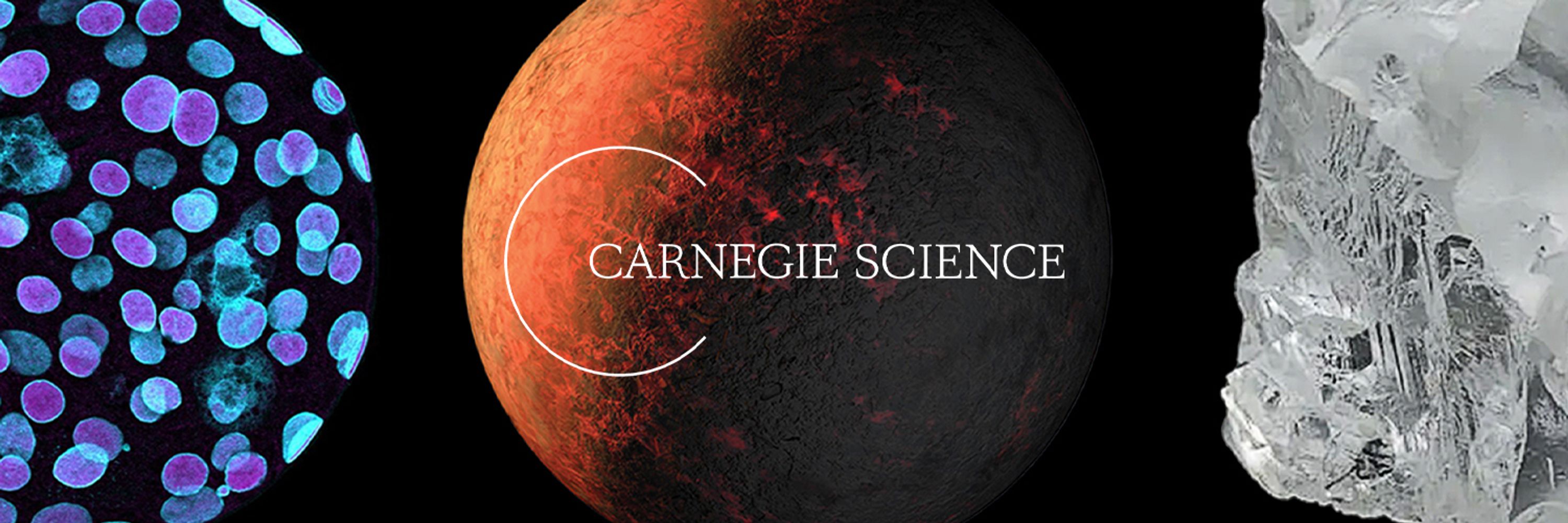
👀 ...imagine what it could find on Mars or Europa! (6/6)
Read the full release + methods 👇
carnegiescience.edu/chemical-evi...

👀 ...imagine what it could find on Mars or Europa! (6/6)
Read the full release + methods 👇
carnegiescience.edu/chemical-evi...
The study shows that this carbon may have been produced by early photosynthesizers! (5/6)
📸 @archeanandrea.bsky.social

The study shows that this carbon may have been produced by early photosynthesizers! (5/6)
📸 @archeanandrea.bsky.social
That’s a major shift in our understanding of Earth's history. (4/6)

That’s a major shift in our understanding of Earth's history. (4/6)
📸 : @miquai.bsky.social


📸 : @miquai.bsky.social

Read the press release: bit.ly/3WSsheN


Read the press release: bit.ly/3WSsheN

Data from @sdssurveys.bsky.social—directed by Carnegie’s Juna Kollmeier—was key to confirming their shared chemistry.
Data from @sdssurveys.bsky.social—directed by Carnegie’s Juna Kollmeier—was key to confirming their shared chemistry.
NASA's TESS → rotation speeds
ESA's Gaia → motion
SDSS→ chemistry
Together, they revealed thousands of stars born in the same cosmic nursery as the Pleiades.
@sdssurveys.bsky.social @esa.int

NASA's TESS → rotation speeds
ESA's Gaia → motion
SDSS→ chemistry
Together, they revealed thousands of stars born in the same cosmic nursery as the Pleiades.
@sdssurveys.bsky.social @esa.int
As stars age, their rotation slows down. By measuring those spin rates, astronomers can estimate ages and uncover hidden family ties between stars.

As stars age, their rotation slows down. By measuring those spin rates, astronomers can estimate ages and uncover hidden family ties between stars.
Access the full paper: www.nature.com/articles/s41...

Access the full paper: www.nature.com/articles/s41...
#AEThER unites experts across disciplines to explore what makes planets habitable. (8/9)
👉 planets.carnegiescience.edu

#AEThER unites experts across disciplines to explore what makes planets habitable. (8/9)
👉 planets.carnegiescience.edu
Planets across the galaxy could be forming their own oceans, and habitable worlds could be much more common than we imagined. (7/9)

Planets across the galaxy could be forming their own oceans, and habitable worlds could be much more common than we imagined. (7/9)
In other words, when a young Sub-Neptune’s thick atmosphere meets its hot magma ocean, it can make its own water! (6/9)

In other words, when a young Sub-Neptune’s thick atmosphere meets its hot magma ocean, it can make its own water! (6/9)
Scientists like Shahar and Miozzi squeeze tiny samples between the tips of two diamonds in a 💎diamond anvil cell💎—a device small enough to fit in your hand, but powerful enough to mimic the heart of a forming planet. (5/9)

Scientists like Shahar and Miozzi squeeze tiny samples between the tips of two diamonds in a 💎diamond anvil cell💎—a device small enough to fit in your hand, but powerful enough to mimic the heart of a forming planet. (5/9)

